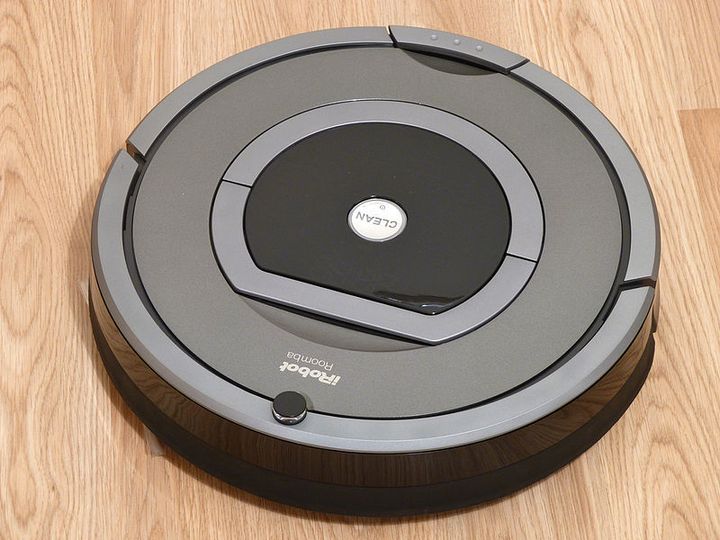The robo-revolution has come a long way over the last three decades. The Omnibot by Tomy was launched in 1984, becoming one of the first domestic robots to hit the market. While it was innovative at the time, by today’s standards it was hardly the pinnacle of technological achievement. This remote-control operated device was, in essence, a cassette player on wheels that became nigh-on useless if you were unlucky enough to lose the remote-control.
Needless to say, robots of today are somewhat more complex.
At the start of the year, Mayfield Robotics announced a piece of home tech that saw the world of robotics take a step towards the sort of future depicted by the likes of I, Robot - albeit more peaceful.
Kuri the Robot Nanny charmed consumers around the world with its child-friendly design and personality. Despite the hype surrounding the products coming out of this Bosch startuP at the start of the 2017, Kuri the Robot Nanny failed to enter the mass market this year, with further fine-tuning of the technology causing a delay. Nevertheless, Kuri is available for pre-order in the US and this unique robot is expected to be delivered in 2018 at the cost of $799.
The technological capabilities of Kuri are so far inferior to the always-listening, multi-purpose home assistants that we have become accustomed to with the Amazon Echo and Google Home. Thus far, the technology behind Kuri looks incapable of tapping into smart home features. With the target audience of Kuri being children, it seems unlikely that the developers would want to make the robot complex. Despite this simplification of the technology that we will likely see, Kuri’s existence represents a massive step forward in terms of robo-tech.
It might not have the sensory capacity of these home personal assistants, but Kuri does represent a giant leap forward in regards to everyday robotics usage. This piece of technology, no matter how basic it is, is a robot that traverses your house on wheels, with the capability of seeing everything that goes on (thanks to its 1080p HD camera). This domestic robot will scan your home while you are away, create a report and send it your smartphone for you.
While leaving your children at home under the supervision of a baby monitor on wheels might not sound like the most sensible idea, the concept behind Kuri is still interesting. With some feature upgrades, Kuri’s real-world practicality will shine through.
Kuri is not the only robot that you can welcome as a new addition to your family. In October 2017, after nearly a decade on hold, Sony announced its intention to bring the AI-powered robotic dog Aibo back from the dead.
Aibo redefines the meaning of pet ownership by offering consumers an alternative to the increasingly difficult responsibility of giving the love and attention a real dog would deserve. Unlike the robot pets of the Sony’s past, AI-powered cloud computing is the driving force behind this new generation, along with sensor technology, cameras, microphones and WIFI connectivity.
The Aibo dog will go on sale in January for 198,000 yen, equating to £1,306 – proving that despite the drop in responsibility, even robot dogs can put a dent in your wallet.
For those allergic to dogs or even the mess-phobic, the benefits of a robot dog are plentiful. Apart from the obvious aspects such as feeding, grooming and cleaning up piles of the unspeakable, there’s also the fact that you will never have to foot the bill for veterinary fees or pay for dog-sitters while you’re at work. If you can get over the sad reality that these robot dogs are not thus far capable of loving their owners, there are definite advantages to the likes of Aibo.
Robots that are designed to mimic nannies or pet dogs may seem totally unnecessary to everyday consumers, but it’s worth remembering that these novelty sideshows will lead to more practical advances in the field. Robot developers are genuinely looking to simplify the lives of consumers, releasing them from the household duties that can be all too time-consuming in modern working life.
This is where companies like iRobot have stepped in to take out some of these domestic strains. Branding themselves as the ‘leading global consumer robot company’, iRobot aims to disrupt the consumer market with their innovative floor cleaners.

The Roomba vacuuming robot uses smart sensors to detect which direction it should go in, making 60 decisions every second to avoid obstacles when in-use. A feature which definitely doesn’t come cheap. The iRobot Roomba 980 is at the top-end of vacuum cleaning robots, coming in at £899.99, whereas the more modest Roomba 605 would set you back £329. The key differences between the two models is that the 980 comes with its own smartphone application, as well as the ability to circumnavigate its way around an entire level of your house. The counterpart to iRobot’s Roomba is the Braava, a robot that hopes to compliment your Roomba by mopping and sweeping hard floors. The pasta sauce spillage on your kitchen floor doesn’t have to be your concern anymore, robo-tech has you covered, albeit at quite a cost. With two models of Braava, pride between £250 and £329, this robot mop uses the latest technology to ensure that you never have to pick a mop and bucket up again.
So what’s next for domestic robot technology? How long until we see a robot that can hoover and mop your floors while looking after your kids? While we’ve witnessed a lot of technological achievement in the more novel end of robotics this year, it’s innovation in these areas that will encourage the wider uptake of robotics and consequently more investment.
